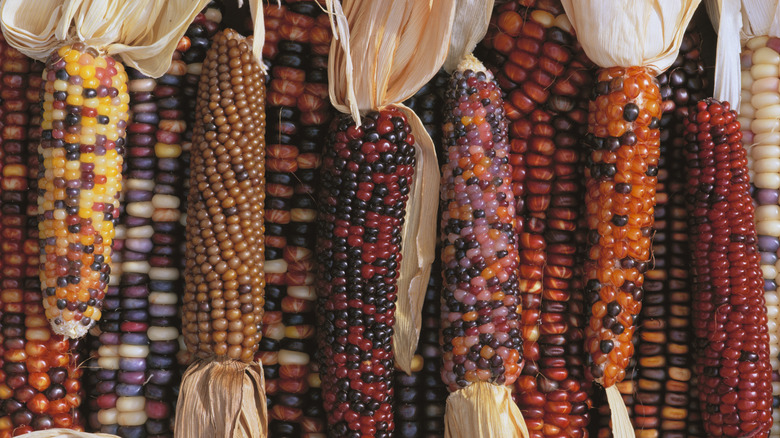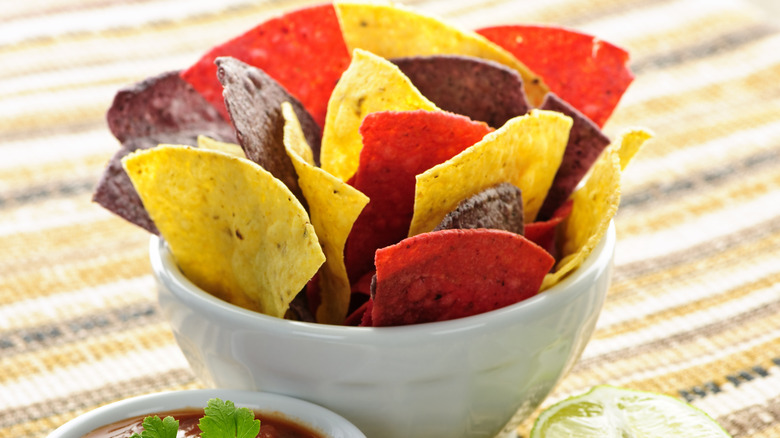Yes, Multicolored Corn Is Edible (But Here's What You Should Know First)
We may receive a commission on purchases made from links.
While sweet yellow and white corn are symbols of summer, when fall rolls around, multicolored dried corn peeks out from cornucopias and hangs on front door wreaths. And as pretty as these cobs can be, there's always the lingering question of whether or not you can actually eat these dazzling kernels.
The answer is yes, but with a caveat. If you're accustomed to tossing your ears in boiling water or on the grill, you can't exactly apply the same methods in the case of Glass Gem corn, which boasts colorful similarities to stained glass and precious jewels. That's because rainbow corn kernels have a tough exterior that prevents them from transforming into the tender, tasty side dish you're accustomed to. Instead, this flint corn has to be converted into cornmeal through a grinding process.
There is also the option to pop this stuff into a movie-friendly treat, but don't expect to have a bowl of vibrant, multicolored bites. Sadly, regardless of whether your kernels are blue or yellow or red, the resulting popcorn will be the standard white color that you've come to expect from a microwave bag.
Ways to enjoy multicolored corn
To make your own version of this ground-up glitter, you can pulverize your multicolored corn kernels using a seed grinder, a blender, a food processor, or even a coffee grinder, like Krups' multifunctional model. You can keep the resulting cornmeal in an airtight container in a cool, dry place for about a year — or even stash it in the freezer for as long as a few years.
This stuff is ideal for gluten-free diets, but is plenty flavorful for anyone who enjoys a corn-based dish. Beyond being the star of visually stunning tortillas for tacos, the ultimate breakfast burritos, and even fried to a crisp for colorful bowls of chips, cornmeal can be used for polenta or grits (the leftovers of which can make for a tasty dinner side), or even a skillet-cooked cornbread.
While the dry kernels are vibrant to behold, when cooked, the color does tend to dull. You can also add a little extra visual pop to your cornmeal with natural colorings like turmeric, paprika, beetroot powder, charcoal, or hibiscus flowers. So while you may not be able to chomp into one of these multicolored ears as-is, with a little time and creativity, you can easily make edible magic.

